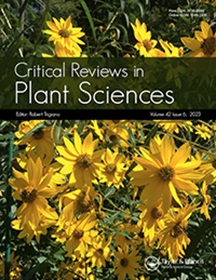Toward a Molecular Understanding of Rhizosphere, Phyllosphere, and Spermosphere Interactions in Plant Growth and Stress Response
IF 6
2区 生物学
Q1 PLANT SCIENCES
引用次数: 11
Abstract
Abstract The rhizosphere and phyllosphere are the below- and above-ground microbial ecosystems of plants. Interactions between the rhizosphere and phyllosphere shape the plant-microbiome environment, which carries out functions from seedling development to reproductive growth. The microbial community of germinating seeds and associated soil is termed the spermosphere. It represents the numerous microorganisms that, by modulating seed exudates, may impact the establishment of the rhizosphere and phyllosphere. In this review, we first explore the recent understanding of plant-microbe interactions in the rhizosphere and phyllosphere. Then, we outline the roles of the spermosphere in plant growth and stress response. The rhizosphere and phyllosphere offer complex routes for the recruitment of microbes, which ultimately affect the spermosphere. Notably, spermosphere microbial communities impact numerous aspects of seed biology, including seed development, dormancy, germination, storage, and dispersal. Environmental and genetic variables that influence rhizosphere, phyllosphere, and spermosphere interactions are also discussed. Plant health and agricultural production can be significantly improved by understanding rhizosphere, phyllosphere, and spermosphere interactions, and this knowledge can be used to optimize the composition and function of these ‘spheres’.植物生长和胁迫反应中根际、叶际和精际相互作用的分子理解
摘要根际和叶际是植物的地上和地下微生物生态系统。根际和叶际之间的相互作用形成了植物微生物组环境,该环境执行从幼苗发育到生殖生长的功能。发芽种子和相关土壤的微生物群落被称为精子层。它代表了许多微生物,通过调节种子分泌物,可能影响根际和叶际的建立。在这篇综述中,我们首先探讨了最近对根际和叶际植物与微生物相互作用的理解。然后,我们概述了精子层在植物生长和应激反应中的作用。根际和叶层为微生物的补充提供了复杂的途径,最终影响精子层。值得注意的是,精子层微生物群落影响种子生物学的许多方面,包括种子发育、休眠、发芽、储存和传播。还讨论了影响根际、叶层和精子层相互作用的环境和遗传变量。通过了解根际、叶层和精子层的相互作用,可以显著改善植物健康和农业生产,这些知识可以用来优化这些“球体”的组成和功能。
本文章由计算机程序翻译,如有差异,请以英文原文为准。
求助全文
约1分钟内获得全文
求助全文
来源期刊
CiteScore
12.90
自引率
1.40%
发文量
15
审稿时长
>12 weeks
期刊介绍:
Critical Reviews in Plant Sciences focuses on presenting in-depth and up-to-date reviews of timely and/or cutting-edge subjects in the broad discipline of plant science, ranging from molecular biology/biochemistry through the areas of cell biology, plant pathology and physiology, genetics, classical botany, and ecology, to practical agricultural applications. Articles in the journal provide an up-to-date literature base for researchers and students, pointing the way towards future research needs. The journal is also a significant source of credible, objective information to aid decision makers at all levels.

 求助内容:
求助内容: 应助结果提醒方式:
应助结果提醒方式:


